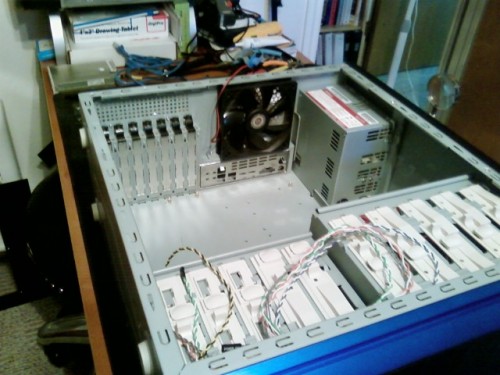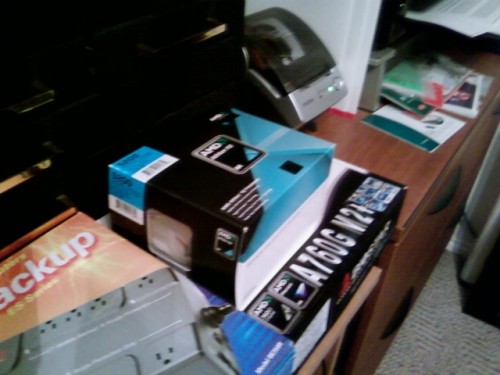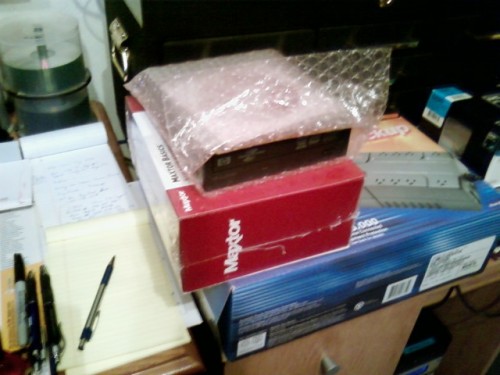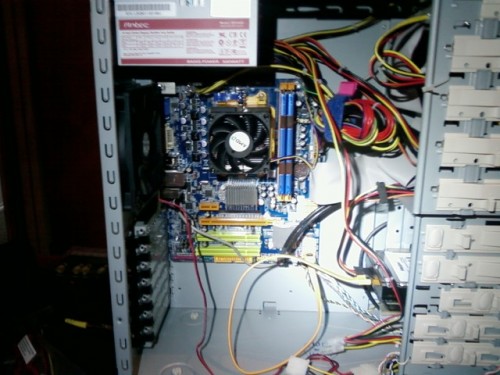Blood and Sweat…
… but no tears, unless you count the sweat getting in my eyes.
I bought a dual-band radio (Yaesu FT-7800) for the truck about a month ago, but had been procrastinating the installation. First, because of the heat. Second, because I hate dealing with automotive installs. This install did nothing to relieve me of my dislike. It was almost as if GM intentionally designed the vehicle to be difficult to install after-market equipment into (and I’ve got the scrapes and bruises to prove it). I think that I’ll take my next (non-GM) vehicle to a custom stereo shop or something and let the pros handle it.
Anyhow, I eventually managed to get everything wired and installed. But I nearly gave myself heat exhaustion in the process.
The first problem to solve was how to mount the antenna. The best location for an antenna is generally in the center of the roof to give maximum height to the antenna and to maximize the ground plane. However, in this case my Avalanche has a sunroof and I also wanted to be able to park it in the garage. Because of its size and ground clearance (it’s the Z71 model), there is only about 3 or 4 inches clearance between the roof and the garage door, leaving no room for an antenna. After a lot of searching I came across the Pro.Fit antenna mount model AVANTPF, which mounts to an existing bolt under the hood (see here for a better picture).
While it claims to be a fit for the 2004-2006 Avalanches, I found that it didn’t quite fit into the slot in the left fender, so I had to take my Dremel and cut a small notch in the upper left part of the bracket to get everything to line up. Unfortunately, while the antenna shown easily clears the garage door, it has a bad SWR reading (1.9:1). I have another antenna that gets a 1.2:1 reading, but it is about 2 inches too long to clear the door. For now I will just install the big antenna when I leave if I plan to use the radio. In the meantime, I will be continuing the search for a decent antenna that’s short enough to clear the door.
The next problem was where to put the radio itself. There was no option to mount the entire radio in the console without cutting up the center console, so I ended up using the remote-head option. The main body of the radio is in the center console under the cup holders (which are contained in a fairly easy to remove insert, so it will be easy to get to the radio in the future). I put the remote head on the dash bezel, just above the top of the center console. The speaker is mounted on the right lower dash (just above the driver’s knee). The last thing I installed was the mic bracket. Unfortunately, I think the heat was getting to me by then, because it turns out that you can’t shift into Drive if the mic is on the bracket. That will teach me to always check clearances before installing something (I did it for everything else besides the bracket; I guess I just got in a hurry). My next task will be to find a new place for the mic. I’ll probably just get another bracket, since I’m reluctant to remove the one that’s already there because it will expose the holes I drilled for the screws. ![]()
Damn, that flash really shows how dirty my center console storage bin is. Looks like it’s time for a thorough detail job.
Oh, yeah, it was like this all day long in the garage:
If I’m going to do much more work like this I’m going to have to break down and buy a shop fan. The stand-fan I have is just too puny to move enough air to matter when it’s this hot.
 June 28, 2009
|
Posted by Aubrey Turner
June 28, 2009
|
Posted by Aubrey Turner
 Categories:
Categories: 


